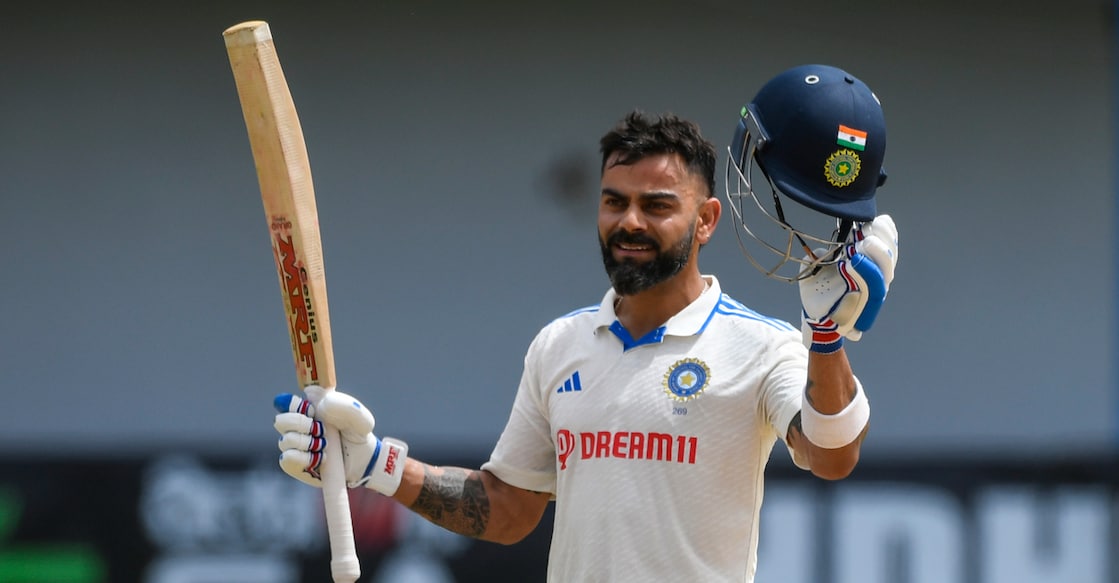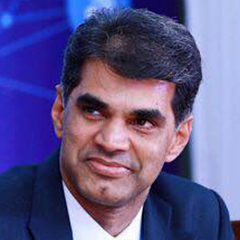Adieu Virat. India will miss your ebullient presence, combative spirit

Mail This Article
If Rohit Sharma’s retirement from Test cricket in the previous week was not completely unexpected, Virat Kohli's decision to stop playing the longer version of the game took cricket fans by surprise. Like Rohit, Kohli too has chosen to remain available to play for India in One Day Internationals (ODIs). The timing of the decision, the manner in which this was announced, the efforts made by top officials of the Board of Control for Cricket in India (BCCI) to deter him from doing so and the other stories doing the rounds all took up considerable media space in the week that went by.
Kohli has been a transformative force in Indian cricket. He was the true successor to Sachin Tendulkar in that he was not only the best batsman in the country but also took his place amongst the top willow wielders of his generation. The No. 4 position in the batting order came to him automatically after the exit of Tendulkar, and he anchored the Indian middle order for most parts of the 13-plus years that he played Test cricket.
He had a shaky initiation into the world of Test cricket, and his final years too were not very productive. But from 2015 till 2019, there was little doubt that he was the batsman most feared by the world's bowlers and easily the most prized wicket in the Indian batting lineup. Hence, he has earned his place in the pantheon of all-time great batters that the country has produced.
But Kohli’s contribution to Indian cricket goes far beyond the output from the willow. He remains the most competitive cricketer that India has produced. Kohli’s Unique Selling Proposition (USP) is the fierce combative spirit he brought to the field of play. He introduced to the side a level of aggression that had hitherto not been seen in Indian cricket. As Greg Chappell, the former Aussie skipper, put it across pithily, “he was the most Australian non-Australian seen; a snarling warrior in whites, never giving an inch, always demanding more…” His success lay in introducing this pugnacious spirit amongst his teammates and ensuring that this was converted into heightened performance levels in Test matches.
For such an aggressive cricketer, Kohli was an incurable romantic when it came to Test. He took his time finding his feet in this version but made no secret of his complete commitment to this format during the years he took the field clad in whites. His passion for Test cricket was reflected in the success India achieved under his stewardship, the 40 victories the side achieved in the 68 matches he led remains a record for the country, besides placing him the fourth position behind Graeme Smith, Ricky Ponting and Steve Waugh in the all time list of most successful skippers in this format globally. The words he penned in the short note through which he announced his adieu from the game wherein he said about “ the quiet grind, the long days, the small things that no one sees but stay with you forever…” reflect his love and passion for the game of cricket played over five days.
Indian cricket owes more to Kohli than to any other person for placing physical fitness at the top of the agenda. His obsession with peak physical fitness was infectious and he ensured that this bug bit everyone in the side. He realised the importance of remaining lean and fit very early in his career, when, after a poor run in one edition of the Indian Premier League (IPL), he decided to remove all elements of flab from his body. The result was remarkable, and it is to Kohli’s credit that he could retain this physique ever since, with not even an ounce of fat in his sleek and toned body. While he could understand the vagaries of form, he did not show any tolerance towards sloppiness in matters related to fitness. The improved fitness levels also brought more victories as the side started saving 20-30 runs due to better fielding and taking catches, which were considered impossible. India’s success in International Cricket Council (ICC) tournaments in white ball cricket in recent years owes more to the higher levels of fitness amongst the players than anything else.
Kohli was distinctly unfortunate in that he could not lead the national squad to a title triumph in any ICC championship. India was definitely best placed to win the championship in 2019, but the unexpected collapse of the top order against the Kiwi pace attack in the semifinals put paid to the hopes of the side. But he could take the team to the pinnacle of rankings in Tests, where India also started winning matches consistently on pitches away from home. The record of 16 wins in 36 matches outside India is testimony to how the side shed its image as poor travellers. He went all out to win Test matches, packing the side with as many as five bowlers in a relentless pursuit of victory.
Another feature of Kohli’s captaincy in Test matches was his support for fast bowlers. He realised that winning matches outside the Indian subcontinent required the presence of top-quality pace bowlers in the side. Jasprit Bumrah, Mohammed Shami, Umesh Yadav, and Muhammed Siraj cut their teeth under his stewardship, and they grew by leaps and bounds thanks to the support the skipper provided them in their early years.
Kohli will also be remembered as one of the few captains who could bring BCCI over to his point of view on all important matters, including the selection of the coach, despite not having any close personal rapport with the President of this body, like Saurav Ganguly had with Jagmohan Dalmia and Mahendra Singh Dhoni with Srinivasan. The removal of Anil Kumble as coach drew widespread flak, but Kohli knew that the team should not be forced to work with a coach they neither liked nor approved. Probably his stature, coupled with the fact that the committee of administrators who ran BCCI at that point of time, were too much in awe of him, helped him to have his way with this organisation, without breaking much of a sweat.
For a cricketer who was so much in love with Test cricket, it was a surprise that he chose to bid adieu to this format, while still making himself available for ODIs. Kohli was the only member of the playing eleven of the side that lifted the 2011 World Cup, who had not yet played in a Test match. But the calm and resolve he showed in the finals, when he walked in to bat with the team staring at a crisis, marked him as someone special. He lived up to the promise that he showed on that occasion. Suppose the reason behind Kohli continuing to play ODIs is to fulfil the ambition of being on the World Cup winning side one more time. In that case, he certainly deserves an opportunity, provided he retains his fitness and form.
It was not a surprise that Kohli scaled levels of popularity that were unheard of even amongst successful cricketers in this country, where this sport is a close equivalent to religion in the number of followers. He dated and married one of the most popular actresses in Bollywood. Even a person as busy as the country's Prime Minister found time to send him a congratulatory message on his wedding. His success inspired a million youngsters to take up the game, and the products he endorsed sold like hotcakes and raked in crores of rupees as profits for the manufacturers.
Finally, a word about Kohli, the batsman. Though he scored mountains of runs in all formats, he was primarily a batsman in the classical mould. It is a credit to his genius that he could retain his roots in the conventional batting style even while adjusting to the demands of white ball cricket. Kohli did not need to play “reverse scoop” or the “ramp shot” to score runs quickly in limited-overs matches as he could keep the scoreboard ticking and tackle the bowlers using conventional stroke play.
Kohli kept in mind the adage popularised by Vijay Merchant that a cricketer should retire “when people ask why and not when they ask why not”. To the outsider, it might appear that Kohli had another couple of years of cricket at the highest level remaining in him, but the protagonist would have felt the waning of the fire burning in his belly, which spurred him to attain great heights. The diminished returns with the bat during the last five years, when the 39 Tests since 2020 produced only 2,028 runs at a very modest average of 30.72, must have troubled this proud cricketer and played a part in hastening his exit from this arena.
Adieu, Virat Kohli! Indian cricket will miss your ebullient presence in whites on the cricket field.


